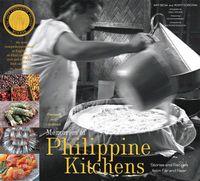Advertisement
The Chinese-Spanish Connection
By Amy Besa and Romy Dorotan
Published 2006

A love-hate relationship between the Spaniards and the Chinese developed through the years. With the native islanders relegated to farming, the Chinese became the merchant class, providing goods to the colony. They also possessed the craftsmanship skills needed to build and fortify Intramuros, the walled city of Manila. As the Chinese community in Manila grew in size and wealth during the sixteenth century, the Spaniards became suspicious of the Chinese and felt vulnerable to rebellion. To maintain their control, the Spanish authorities created the Parian (from the Chinese word palien, meaning organization), an area outside the walls of the Intramuros, and forced the Chinese to live and do their business there. But the Spanish were so dependent on Chinese goods and services that they assigned one gate in the wall as the Parian gate, through which Chinese merchants could pass once a week to do business with the city.

